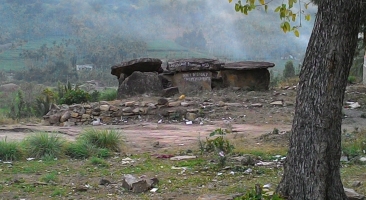Burials/memorials, called megaliths in archaeological terminology, are one of the most common archaeological remains found in Kerala. While the practice of raising monuments of large (mega) stones (liths) was prevalent in many parts of Peninsular India, the monuments of the region show high architectural variability. Monument types like kudakals and topikkals are unique to the region. The built feature of the megaliths often houses burial goods, such as various types of ceramic vessels, iron tools and beads. Varying local names as well as myths and traditions are associated with these monuments. This module will familiarise the reader with this cultural practice of the past through visual and textual aids; introduce the different monument types and associated archaeological materials, and place them in the larger scene of the region’s past; and delve into the ways in which archaeologists make sense of these remains through an accessible presentation of selected themes.
Megaliths of Kerala: Burial and Memorial Practices of the Iron Age
Dr. Rachel A Varghese
Rachel A. Varghese is currently employed as Research Officer at the Kerala Council for Historical Research. She completed her doctoral research in 2018 on the thesis titled 'Archaeology, the Public Nation and Region: Case Studies form South Asia' from the Centre for Historical Studies (CHS), Jawaharlal Nehru University (JNU), New Delhi. Her academic training is in archaeology and history, with a Masters Degree and MPhil in History from the CHS, JNU, and a Masters degree in Archaeology, Erasmus Mundus Masters in Prehistoric Archaeology and Rock Art. She has training in field methods of archaeology through participation in different archaeological field projects in India and abroad. Her areas of interest include public archaeology, politics of archaeology, archaeology and history of Indian Ocean trade, and early South India.


